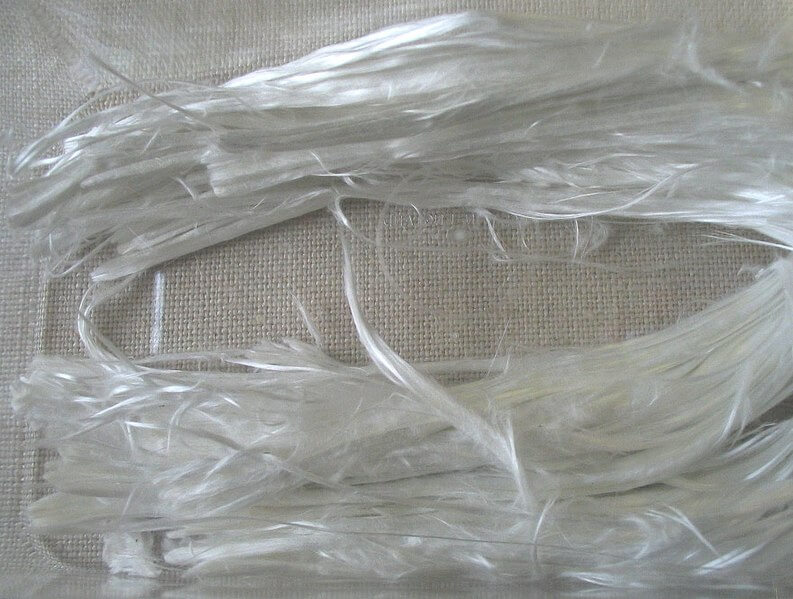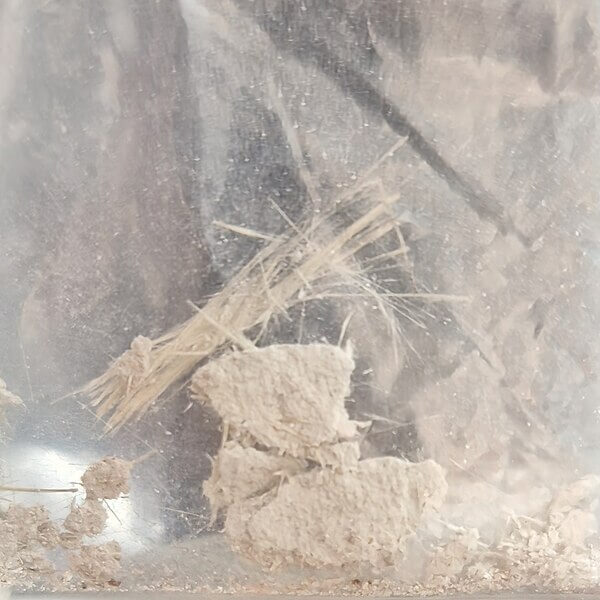What Is Asbestos?
Last Updated on 17 January 2024
Asbestos – a word that has become famous and infamous over time, due to its link to serious health hazards. This article aims to provide you with a more detailed understanding of the subject “what is asbestos?” and all its related aspects. We will explore its historical background, various applications, the potential dangers it presents, and the necessary precautions to safeguard yourself and your loved ones.
So let’s begin our exploration by delving into the origins of this naturally occurring, yet potentially dangerous substance.
The Origins of Asbestos
The history of asbestos, a naturally occurring mineral, can be traced back to ancient civilizations. Its usage can be dated as far back as 2500 BC in Finland, where it was used to reinforce pottery. It has been extensively utilised across industries due to its exceptional qualities such as heat resistance, durability, and insulation. Its versatility and durability have made it a favoured option for construction, shipbuilding, and manufacturing materials.
The name of this substance is derived from the ancient Greek words “Amiant” or ‘Amiantos’ which means “unquenchable” or “inextinguishable.” Pliny the Elder was one of the first sources who noted the characteristics of asbestos, particularly when made into a cloth called they called Vivum. Pliny the Elder was a famous Roman commander who unfortunately was in the wrong place at the wrong time as he was in Pompeii when the volcano erupted. For centuries since, asbestos has been valued for its exceptional durability and its ability to resist fire.
Different Types of Asbestos
So what is asbestos? Well, there are six primary types of asbestos, each possessing distinct properties. These were frequently mixed together in varying degrees depending on the characteristics of the product being made. The first three in the list were the most common which were heavily imported or exported, particularly into the UK:-
Chrysotile
Chrysotile, also known as white asbestos, is a frequently encountered form that can be found in various roofing materials and automotive products.
Amosite
Amosite, also known as brown asbestos, is commonly utilised in insulation materials and cement sheets.
Crocidolite
Crocidolite, also known as Blue Asbestos, was commonly utilised in the construction of steam engines and pipes. This form is extremely hazardous.
Tremolite
Tremolite is often found as a contaminant in other asbestos minerals.
Anthophyllite
Anthophyllite is present in small amounts in certain talc products. This particular type of asbestos is not frequently encountered and is seldom utilised in commercial goods.
Actinolite
Actinolite is found in certain types of insulation and construction materials.

Tremolite asbestos fibers
Historical Uses
Throughout the ages, asbestos has been utilised in various ways, tracing its roots back to ancient civilizations.
It was used by the ancient Egyptians in embalming, as well as in pottery and clothing due to its exceptional fire-resistant qualities. Its fire-resistant properties were highly regarded by the Greeks and Romans, who incorporated it into their clothing and building materials – the Greeks also used it for lamp wicks.
During the industrial revolution in the 19th century, its popularity soared as it became an essential component in numerous industries, including shipbuilding and construction.
Throughout the 20th century, a wide range of products contained asbestos, such as insulation, brake pads, roofing materials, household items like toasters and hairdryers, and even cigarette filters. It appeared to be a perfect material because of its excellent fire resistance and insulating properties.
The Hidden dangers
In spite of its extensive usage and once widespread appeal, asbestos conceals a grim truth – it possesses a high level of toxicity when its fibres are released into the air and subsequently inhaled. Prolonged exposure to asbestos containing materials (ACMs) can result in severe health problems. Asbestos-related diseases often take years to manifest, making early detection and prevention vital. In some cases short term exposures can be sufficient to cause illness and even death, as it is an area not well understood.
The primary health risks associated with asbestos exposure include:-
1. Asbestosis
Asbestosis is a long-term respiratory condition that develops due to the inhalation of asbestos fibres. Long after being exposed, individuals may experience lung scarring and difficulties with breathing.
2. Mesothelioma
Mesothelioma is a rare and highly aggressive type of cancer that impacts the lining of the lungs, abdomen, and heart. It is primarily associated with asbestos exposure.
3. Lung cancer
Exposure to ACMs greatly heightens the likelihood of developing lung cancer, especially among individuals who smoke.
4. Additional Health Concerns
Throat, kidney, and peritoneal cancers can also be caused by exposure to asbestos.
Who is at risk of asbestos exposure?
Certain groups of people face a greater risk of being exposed to asbestos in certain circumstances as follows:-
Workers in High-Risk Industries
Individuals employed or previously employed in industries that frequently utilised asbestos, including construction, shipbuilding, military, automotive repair, and manufacturing, face a heightened risk. These individuals encompass construction workers, plumbers, electricians, military personnel and shipyard workers.
Occupational Settings
People employed in older buildings, such as demolition workers, renovation contractors, and maintenance personnel, may encounter asbestos when they disturb materials containing it as part of their job.
Military Personnel
It is important to note that asbestos was utilised in a range of military applications, such as naval ships and military bases. It is possible that veterans, especially those who served in the Navy or in construction roles, may have been exposed to asbestos.
Family Members
It is important to be aware of the potential risk of ‘secondary exposure’ to asbestos. This can occur when individuals who work with asbestos unknowingly bring home fibres on their clothing, which could potentially expose other family members.
Residents in older homes
It is important to be aware that homes and buildings constructed, before asbestos was finally banned in the UK in late 2000, were implemented may still have asbestos-containing materials (ACMs). Homeowners and residents in such buildings face potential exposure if these materials deteriorate or are disturbed during renovations.
Environmental Exposure
There are certain areas where the soil and rock contain natural asbestos deposits. Individuals residing in close proximity to these deposits may potentially come into contact with asbestos fibres due to environmental factors such as dust and erosion.
Asbestos Removal Operatives
Workers involved in the removal, encapsulation, or repair of asbestos-containing materials must adhere to strict safety procedures to minimise their risk. These are laid out in and around the Control of Asbestos Regulations 2012.

Sample of loosely bonded “low density insulation board” with clearly visible asbestos fibers (30-60% Amosite/brown asbestos)
Regulations and Bans
Many countries have implemented stringent regulations and bans on the use of asbestos due to the well-documented health hazards associated with it. Actually, as of 2023, more than 60 countries have implemented bans or restrictions on asbestos in different forms, including the UK. However, the vast majority of countries such as the USA, Russia, China, India and Mexico still use the hazardous mineral.
Asbestos was banned in the UK in stages:-
- Crocidolite and amosite were banned in the UK in 1985.
- Chrysotile was banned in the UK in 1999.
The purpose of implementing bans or restrictions is to safeguard workers and the general population against illnesses caused by asbestos. Nevertheless, the level of regulation differs from country to country.
Here in the UK, the primary regulations governing asbestos are as follows:-
The Control of Asbestos Regulations 2012 (CAR 2012)
These regulations establish a thorough framework for effectively managing asbestos in the workplace. Subsequently, ‘Dutyholders’ are required to identify the presence of asbestos, assess its condition, and effectively manage the associated risks. Some important provisions of CAR 2012 are: –
Duty to manage asbestos: Employers and building owners must identify and properly manage asbestos in non-domestic properties.
Asbestos surveys: These are a necessary requirement for dutyholders to assess the presence and condition of materials that may contain asbestos.
Training: This is essential for individuals who handle or may encounter asbestos to ensure their safety.
Notification: It is mandatory for employers to inform the appropriate enforcing authority when conducting work involving certain types of asbestos product.
Control measures: Steps must be taken to minimise or eliminate contact with asbestos, such as employing safe methods for removal or containment.
The Health and Safety at Work etc. Act 1974
This act imposes a broad responsibility on employers to safeguard the well-being, safety, and welfare of their employees and anyone else who may be impacted by their work, including the proper handling of asbestos.
The Management of Health and Safety at Work Regulations 1999
Employers are obligated to conduct risk assessments and implement necessary measures to safeguard the well-being and safety of their employees. This includes effectively managing risks associated with asbestos exposure.
The Construction (Design and Management) Regulations 2015
These regulations pertain to construction projects and necessitate the recognition and handling of risks associated with asbestos throughout the process of planning and carrying out construction work.
Ensuring Your Safety
If you have any concerns about the presence of ACMs in your home or workplace, it is important to prioritise safety measures to safeguard yourself and those in your vicinity. Here are a few steps to consider:-
1. Identification
Firstly, It is highly recommended to have a professional inspect your property in order to identify any materials that may contain asbestos. They will be highly experienced in identifying ACMS visually and with appropriate laboratory testing. It is not recommended to try identifying them on your own, as asbestos fibres can become airborne in the process. However, the only way to identify asbestos-containing products 100% is to take samples and have then tested in a professional laboratory.
An asbestos surveyor can take these samples for you and send them off to be tested, with the results coming back within a couple of days or so.
2. Removal or Encapsulation
Secondly, If asbestos is detected, it might be necessary to have it removed by a professionals trained, qualified and licensed in asbestos removal. Encapsulation can be a safer alternative in certain situations, where the ACM is sealed off.
3. Minimise Disruption
It’s important to refrain from engaging in any activities that may cause disruption to materials containing asbestos, such as drilling, sawing, or sanding.
4. Safety Gear (PPE)
Finally, when working in an environment with asbestos, it is crucial to have access to appropriate personal protective equipment. This includes appropriate masks and protective clothing to ensure your safety.
Concerns about ACMs in buildings
Many older buildings still contain ACMs, especially in insulation, roofing, and flooring. Thorough inspections and, if needed, removal or encapsulation are crucial to ensure the safety of residents or workers.
The Presence of Asbestos in the Environment
Asbestos can be found not only in buildings but also in the natural environment, posing a potential risk. It can be discovered in rocks, soil, excavated materials and even water sources. When deposits of asbestos are disturbed, it can release airborne fibres, which can pose serious health risks.
Furthermore, the demolition and renovating of buildings can result in the release of asbestos fibres from construction materials, causing environmental pollution by contaminating the air and water.
These tiny fibres have the ability to remain in the environment for long periods of time, which can be harmful to humans.
Exploring Different Materials and Substitutes
With the increasing recognition of the dangers associated with asbestos, there is a significant movement to substitute asbestos materials with safer alternatives across different sectors. Many countries now promote the use of alternative options that offer comparable functionality while minimising health hazards. For example, such alternatives include Polyurethane foam, Amorphous silica fabric and Cellulose fibre.
These materials offer manufacturers and distributors cost-effective alternatives to asbestos-containing products like insulation, cloth, and paper.
Present Concerns Regarding Asbestos
Although the use of ACMs has decreased considerably, concerns regarding previous exposure are still arising. Consequently, ongoing asbestos-related lawsuits and compensation claims serve as a reminder of the enduring consequences of its previous widespread use.
Increasing Awareness and Education
It is crucial to spread awareness about the hazards of asbestos and provide education to the public, particularly individuals in occupations that are at a higher risk. Therefore, having a good understanding of how to handle, dispose of, and regularly check your health can help reduce the dangers that come with being exposed to ACMs.
All employees whose work could potentially expose them to asbestos should receive asbestos awareness training. It is extra important to provide this training to demolition workers and workers in refurbishment and related trades who may potentially disturb the building’s structure. This includes electricians, plumbers, builders, engineers, lift engineers, CDM co-ordinators and others. HSE figures on Occupational Asbestos Deaths show plumbers, electricians and joiners are the highest risk groups.
Conclusion – What is Asbestos?
In conclusion, once hailed for its versatility, asbestos is now widely known for its associated health risks. It is crucial to have a comprehensive understanding of the history, potential dangers, and the significance of effective management in order to protect your health. Therefore, If you believe you may have been exposed to ACMs, it is crucial to seek professional help right away and take the appropriate measures to safeguard yourself and your family.
In addition, always prioritise prevention to protect yourself from health issues related to asbestos. Keep yourself updated and prioritise your safety.
Despite efforts to protect individuals through strict regulations and bans, problems related to the use of ACMs continue to persist. It is crucial to raise awareness and ensure proper handling and removal in order to minimise the risks associated with this hazardous material.
Frequently Asked Questions
Q: What is asbestos made of?
Asbestos is a collection of minerals found in nature, consisting of strong and resilient fibres that can withstand high temperatures, fire, and chemicals.
Q: Is asbestos still used today?
Asbestos usage has seen a significant decrease as a result of its health hazards, although it may still be present in older buildings and certain industrial uses. Banned in the UK but still used extensively across the globe.
Q: What methods can be used to identify the presence of ACMs in a residential setting?
It’s crucial to enlist the expertise of a skilled asbestos inspector/surveyor for a comprehensive assessment. Testing kits that can be done at home are available, although their accuracy may not be guaranteed. We would only recommend their use in limited situations.
Q: What steps can I take to safeguard myself from asbestos exposure?
If you believe there may be ACMs in your home, it is advisable to seek assistance from a professional to conduct testing and handle its removal. Take caution when dealing with materials that contain this harmful substance.
Q: What should I do if I’ve been exposed to asbestos?
It is important to promptly seek medical advice and inform your healthcare provider about the exposure. Therefore, regular health check-ups are essential if you have been exposed.
Q: Are there any ways to use asbestos safely?
No. It is highly recommended to use safer alternatives instead in various industries.
Q: Is it possible to treat diseases caused by asbestos exposure?
Unfortunately, there is currently no known cure for asbestos-related diseases. However, it is important to note that early detection and medical treatment can play a crucial role in effectively managing the symptoms associated with these conditions.
Q: What are the important facts to be aware of regarding ACMs in older buildings?
It is important to be aware that older buildings may contain ACMs, and any renovation or demolition work has the potential to release harmful fibres. As a result, you must seek advice from professionals before undertaking any tasks.
Need professional advice?
We hope you found our article on the subject of ‘What is asbestos?’ both useful and informative. If you need any help or advice at all then we’ll be very happy to assist you. Give us a call and our experts will give you some advice and guidance on whatever if is you’re concerned about.
Please contact us on 0800 141 2676, email us at info@rbasbestos.co.uk or fill in the form below.
Our professional surveyors conduct inspections and surveys every day across the UK on all types of properties, both residential and commercial, for private home owners and commercial property Managers and owners. So when it comes to managing ACMs in your property, you’re in very safe hands with RB!!

